Stellar Repair for Exchange repairs corrupt Exchange database (EDB) files and can export the recovered data directly to Microsoft 365. It supports parallel processing that helps in faster processing and saving of mailboxes (up to 8 mailboxes together) to Microsoft 365. Follow these steps to recover the data from corrupt EDB file and export the recovered mailboxes to Microsoft 365 by using Stellar Repair for Exchange.
- Open the software. On the Home screen, click Select EDB File.
- In the Select File dialog box, click Browse to select the corrupt EDB file or click Find to locate the file in a drive, folder, or subfolder.
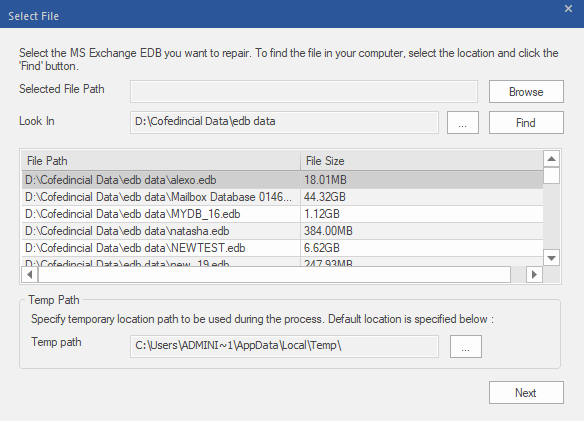
- Select a Temp Path, if the default path does not have free storage space, and then click Next.
- Select Quick Scan or Extensive Scan and then click OK.
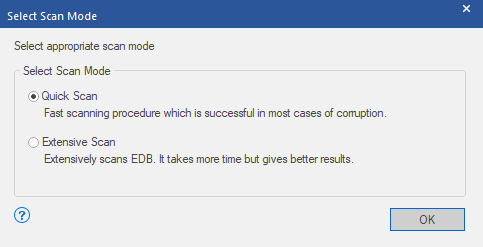
- After a successful scan and repair process, the software displays a preview of the repaired mailboxes and mailbox items from the EDB.
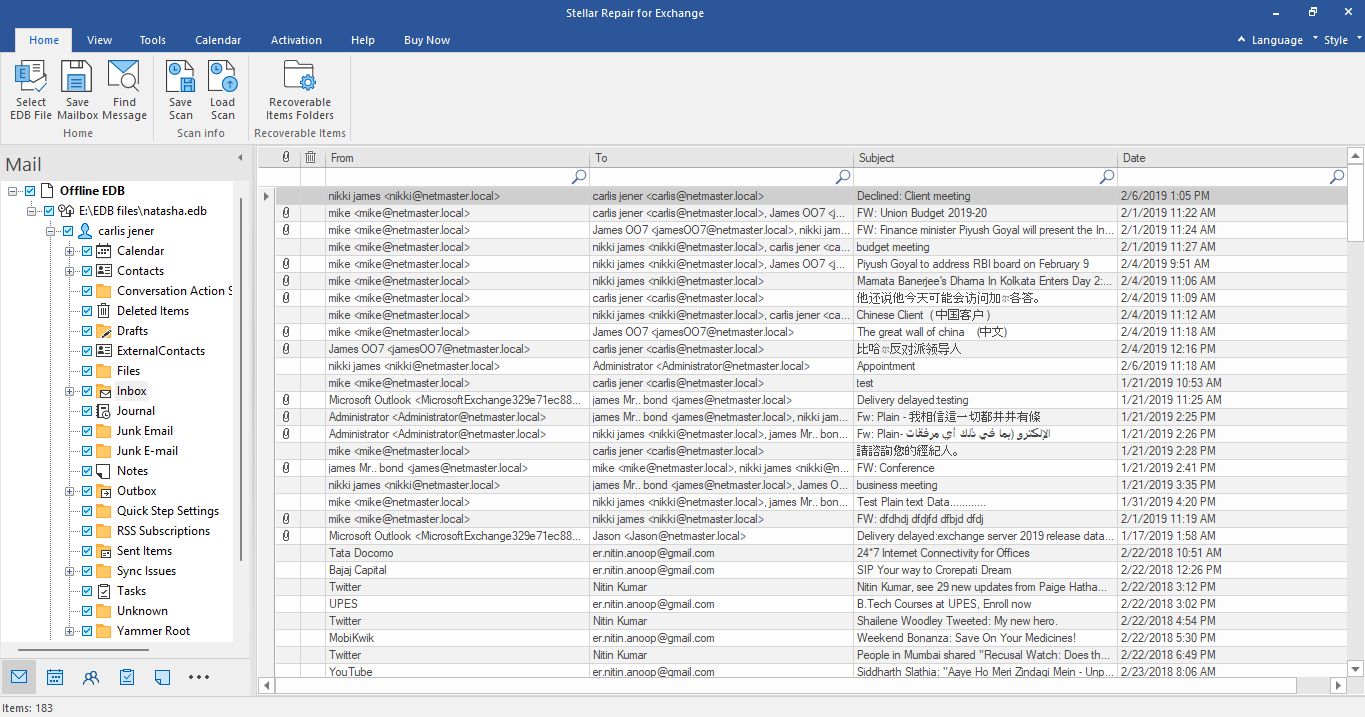
Use the following steps to export multiple mailboxes to Microsoft 365:
- After the scan, select desired mailbox or multiple mailboxes from the left preview pane.
- From the main menu, click Save Mailbox from the Home ribbon. A Save As window will appear.
- Select Export to Microsoft 365 and then click Next.
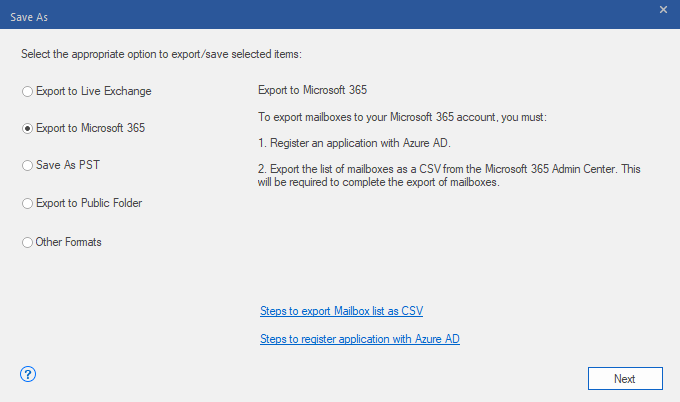
- Microsoft 365 Login Credentials dialog box opens. Enter Email Address, Application (Client) ID, Directory (Tanant) ID and Client Secret Value to export mailboxes to Microsoft 365. Click Next to continue.
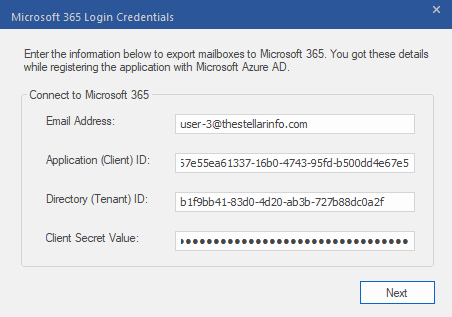
- The Load Mailbox List dialog box will appear. Click the Browse button to select the CSV file containing the list of mailbox users. Click OK.
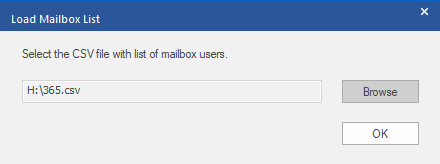
- Map Mailboxes screen appears. This screen can be used for functions such as setting priority to export the mailbox data, map source mailboxes to desired destination mailboxes, applying a filter for exporting the data, etc.
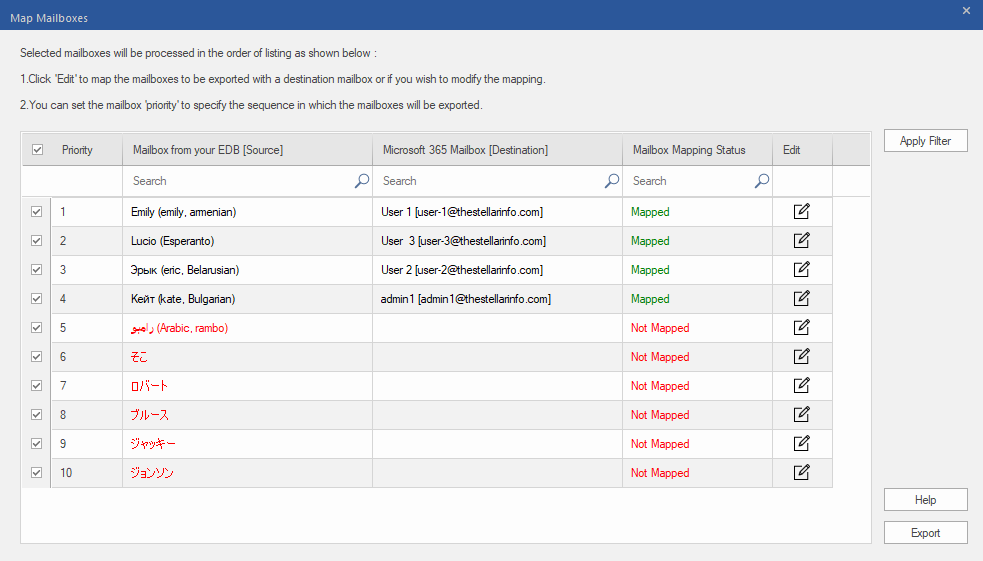
- Save dialog box appears.

- A Saving Complete dialog box opens, displaying a message “Data Exported Successfully” and displays the number of saved mailboxes, aborted mailboxes, removed mailboxes and failed mailboxes.
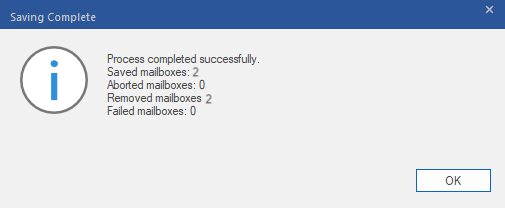
Use the following steps to export a single mailbox:
- After the scan, right-click on any mailbox and select the Export to Microsoft 365 option.
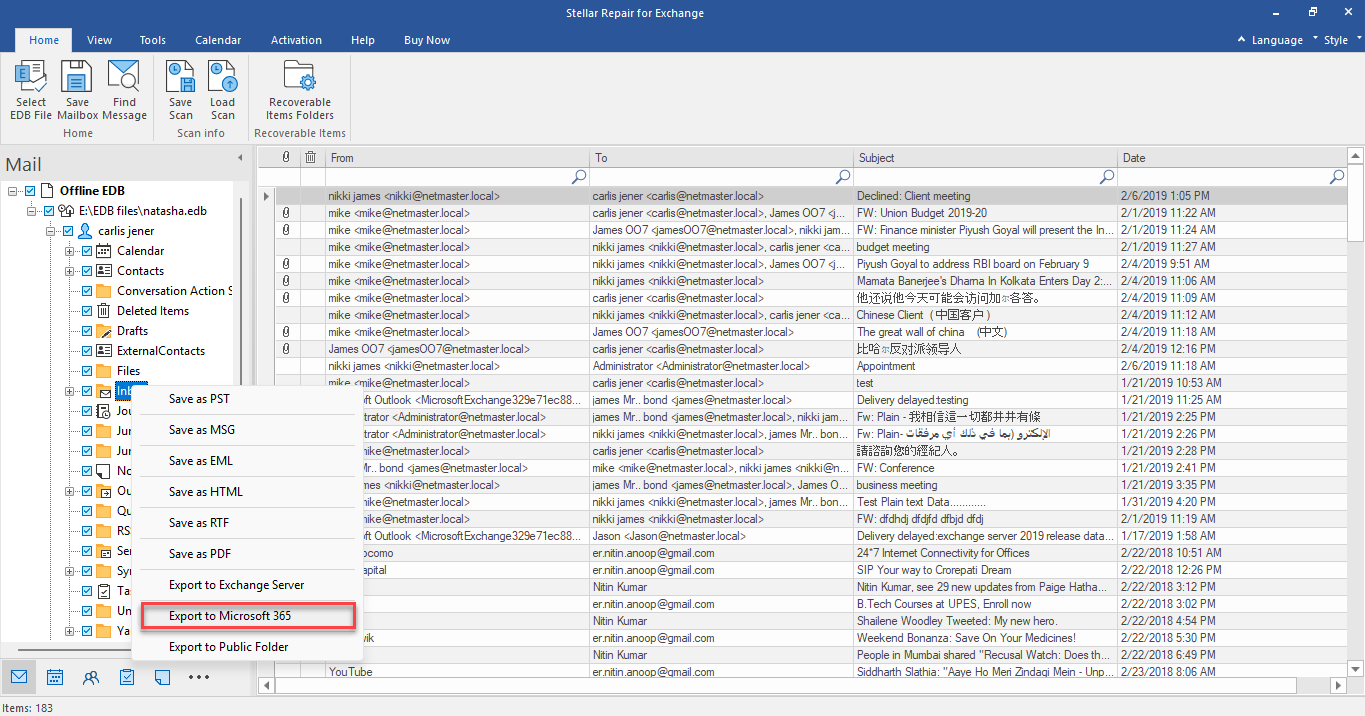
- Microsoft 365 Login Credentials dialog box opens, enter Email Address, Application (Client) ID, Directory (Tanant) ID and Client Secret Value to export mailboxes to Microsoft 365. Click Next to continue.
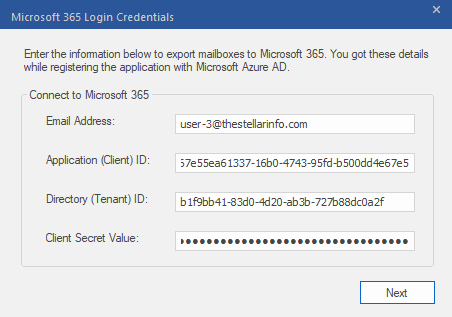
- The process screen will appear, displaying the status of mailbox processing, mails of folder processing, and the number of mails processed.
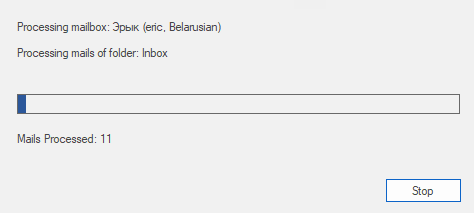
- The Process Complete dialog box will appear, displaying the message "Data exported successfully."
These were the quick steps that make the export of recovered Exchange mailboxes to Microsoft 365 easier and smoother.
However, apart from exporting recovered mailboxes to Microsoft 365, you can also export recovered files to live Exchange server mailboxes. Just go through the referenced KB and follow the mentioned steps over there.
Reference: export recovered mailboxes server








